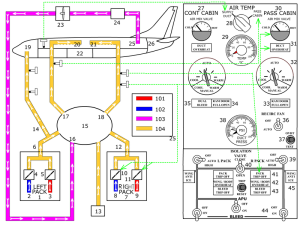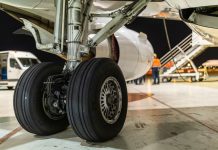Imagine putting your nose out the window of a moving aeroplane, even just for a moment. Imagine that the aeroplane is cruising, you need a spot of fresh air and you’re able to easily pop open the three layers of Plexiglas that make up the window next to you (that’s right, there are three layers…you can read the reason why in this article.
If you were able to manage it, not only would you depressurise the entire cabin of the aeroplane, but you’d also instantly freeze, together with all the other passengers.
A civil aircraft flies at about 10,000 metres above the ground, an altitude which allows it to fly over bad weather conditions and travel safely. Temperatures at that altitude can reach below -60°C, with extremely low humidity. It’s not difficult to see why it’s necessary to modify cabin conditions in order to make it possible and comfortable for passengers and crew to be on board.
The ICAO has also established the International Standard Atmosphere (ISA), which regulates the standards for pressure, temperature, humidity, density and air composition to ensure the perfect functioning of the on-board instrumentation.
Seem simple? It’s anything but.

The Environmental Control System (pressurisation and air conditioning system) has a very complex task.
Air enters through the front part of the engines and gets bled at very high temperatures by the compressors. It then gets mixed with cold air coming from outside and channelled up to the air conditioning system with the desired temperature and moisture levels.
So, the air we breathe on board passes…through the engines???
Yes, BUT before reaching the cabin, the air gets filtered and purified to ensure the well-being and health of passengers and crew. Not only that, but every five minutes or so, the same air gets completely regenerated and recirculated. It’s then ejected outside by an outflow valve located on the fuselage.
Some of you might remember a time when passengers were allowed to smoke on board a plane. Today it sounds bizarre, but until 1989 in Italy and until the mid-1990s in Germany, lighting a cigarette in the last row of the aeroplane was completely normal.
Now that you know the complexity of an aeroplane’s air conditioning system, it’s easy to understand why cigarettes are as dangerous for the precious purification filters as they are for our lungs…




